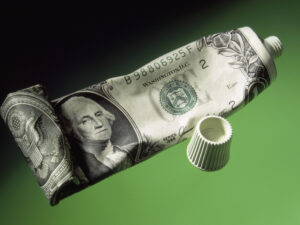De-dollarization: Global Status of Greenback Shrinking as Countries Look to Trade in Alternative Currencies, Says Bank of Russia
The comments below are an edited and abridged synopsis of an article by Jonny Tickle
The US dollar’s role in the Russian and global markets is still substantial, but interest in it will gradually decline in favour of other currencies, particularly the euro, the Bank of Russia’s governor predicted recently.
Speaking to Business Daily RBK, Elvira Nabiullina noted that international business is gradually switching to other currencies, while Russia has changed the structure of its National Wealth Fund to cut out the dollar, “taking into account not only economic, financial considerations but also geopolitical, including sanctions risks.”
Earlier this year, the Finance Ministry announced that it had sold all of the US dollars in the fund, boosting the share of euros and yuan to 9.7% and 30.4%, respectively. The British pound is now at 5%, while the Japanese yen is 4.7%.
“We reduced dollars not only in our National Wealth Fund, but also in our foreign exchange reserves,” she told the newspaper.
In her opinion, the world’s foreign exchange markets will slowly move away from the greenback, and countries will begin to favour using their own national currencies and the euro for cross-border trade.
However, she doesn’t think it’ll happen anytime soon.
“These things don’t happen abruptly. They take years,” she explained, noting that the previous reserve currency of the world, the British pound, faded away over many years.
In July, the Chinese ambassador to Russia said that Moscow and Beijing would boost efforts to move away from the US dollar in bilateral trade, noting that the yuan’s share had risen from 3.1% in 2014 to 17.5% in 2020.
Last year, for the first time ever, the dollar share in trade between China and Russia fell below 50%. Just four years before that, in 2016, the greenback accounted for over 90% of their currency settlements.

